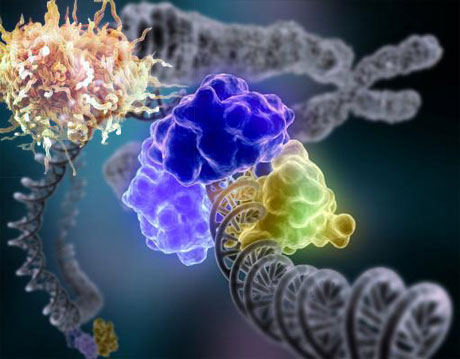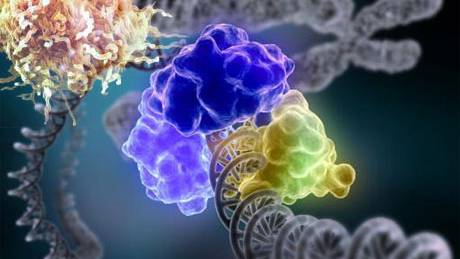Scientists have a new way to reshape nature, but none can predict the cost
Source: guardian.co.uk

Synthetic biologists say their technology could tackle climate change and feed the hungry, but its dangers are terrifying
If you've never heard of synbio, you will hear plenty in the next decade. Synthetic biology now occupies roughly the same space on the public's radar that computing might have done in the 1960s or genetic modification in the 1970s - it's largely unheard of by anyone except the scientific community and its geeky observers. But as the pace of breakthrough in this area quickens, the sense of being on the edge of an extraordinary technological revolution is giving even the scientists involved vertigo.
Part of the reason why synbio has had so little attention in the British media is that most of the running is being made in America. There, a few key players are jockeying for position in a race that promises to make them wealthy in the way that computers did Bill Gates. With the arrival in the UK this week of one of those players, Craig Venter, for a string of public talks, the huge implications of synbio might finally begin to impinge on public consciousness here.
We didn't much like genetic modification (GM) by the time it reached trials in the UK in the 1990s, but that could come to look like a storm in a teacup compared to synbio. While GM was about adding or knocking out the odd gene, synbio is about using nature as a giant Meccano set, building entirely new organisms from bits of DNA called BioBricks in what's known as the bottom-up approach. Alternatively, there's Venter's method of stripping out DNA to find the simplest life form and then using that - like a car chassis - to add bits to achieve a bespoke design: this is the breakthrough he says he is on the point of achieving. In this brave new world, they talk of a future in which synthetic biologists will work much like graphic designers, building new organisms on their laptops and emailing them off to the gene foundry for construction.
The best guess is that we are a year or two away from the first commercial application becoming clear, but already huge money is being ploughed in. Venter and his colleagues are plastering every step of their research with sweepingly broad patent applications; it's a gold rush. By 2015 it's estimated that a fifth of the chemical industry (worth $1.8 trillion) could be dependent on synbio. But if that is to happen, the public have to be kept on side and persuaded that the risks with synbio - and it is a frightening science - are worth taking.
What leading synthetic biologists don't want is a public backlash and heavy-handed government interference. They talk of self-regulation - last week the J Craig Venter Institute in Maryland put out another set of proposals - while pushing their research so far ahead of the public debate that by the time we've all cottoned on to what they're up to, it will be too late to do much about it.
So beware of how we are being sold this scientific revolution with pledges to help Africa's poor and ease global warming. The poster child for synbio is the production of a cheap anti-malarial drug. There is a worldwide shortage of natural artemisinin, the most effective anti-malarial extracted from the wormwood tree, but synthetic biologists are on the verge of finding a way to insert the gene responsible for artemisinin into a strain of yeast which could then "manufacture" it in cheap, vast quantities. Further from development but equally plausible are bacteria that could mop up oil spills or extract heavy metal contamination from soil. The most tantalising possibilities might offer help with climate change: bacteria that could break down cellulose to produce ethanol, and even bacteria that could soak up carbon dioxide. Fuel from vast slurry pits of bacteria (they could always lob in a gene to make the smell palatable): the future is an industrialisation of nature.
Some of these promises will be much like the "golden rice" that was used to promote GM, with claims that it would alleviate chronic vitamin A deficiency across Asia, but which has yet to materialise. However, no one doubts that there will be dramatic and benign applications of synbio. The problem is that no one can predict what their price tag might be. How synbio could go wrong keeps even dedicated synthetic biologists awake at night; one, Drew Endy, at the Massachussets Institute of Technology, has said: "I expect this technology will be misapplied... and it would be irresponsible to have a conversation about the technology without acknowledging that fact." Sir Martin Rees, president of the Royal Society, talks of bioterror or "bioerror" - a mistake - that could lead to a million casualties in a single event by 2020.
The most frightening aspect of synbio lies in two dimensions of the science. First, after the upfront research costs, synbio has the potential to be a highly accessible technology much like electronics. Unlike nuclear technology, for example, it won't require expensive resources or unusual expertise. In a decade, thousands of laboratories and science graduates are likely to be able to practise synbio, making the task of regulating its use extremely difficult.
Second, creating fantastic bacteria in a contained laboratory is one thing, but what happens when they get out and cross with their wild cousins, mutating into organisms we had never foreseen? The whole point of this science is the development of large-scale use outside a lab, but can we predict what consequences releasing these new organisms could have? The answer is a resounding no. We know about less than 1% of existing bacteria, and have very little understanding of how they mutate. But what we do know is that bacteria survive almost anything - if some malevolent bacteria developed, they would be hard to kill off.
This is scary stuff, but no one is seriously suggesting we can stop here. Even the most nervous synthetic biologists recognise that if they don't keep ploughing ahead, others without their scruples will: we need responsible scientists to alert us to the possibilities of this science. Besides, the promise of huge riches will keep driving development - Venter claims that if he pulls off his organism, it could be worth billions or even trillions of dollars in licensing deals.
Imagine if the engineers of 18th-century Britain could have foreseen the consequences of industrialisation. If they had been warned that it would bring untold wealth and comfort to millions, but would also disrupt human communities, lead to a terrible escalation of war and huge environmental degradation, how then would they have weighed the massive and momentous consequences? And how are we going to? In a couple of decades we could have a nature to organise entirely as we like - the scientist Freeman Dyson suggested black-leaved forests for more efficient use of sunlight in an article on synbio in a recent New York Review of Books. We could be busy creating our own biodiversity to replace the one we will have lost. We might have a "new, improved nature" which is more efficient in meeting our needs and ensuring the survival of future generations: is that a threat or a promise of salvation? And who are we going to trust to make that judgment call?
Article from: http://www.guardian.co.uk/Columnists/Column/0,,2196397,00.html






















